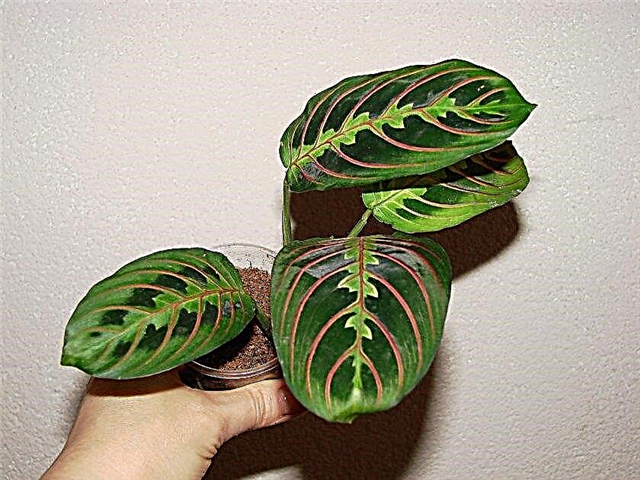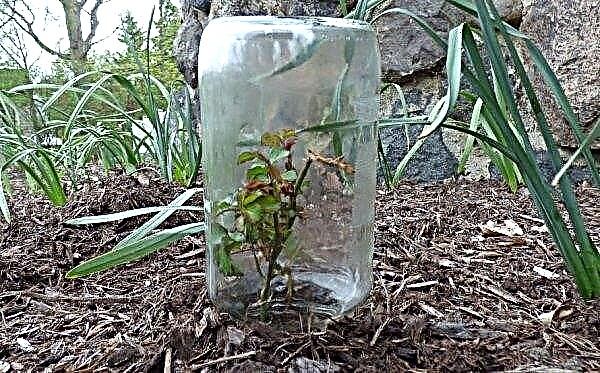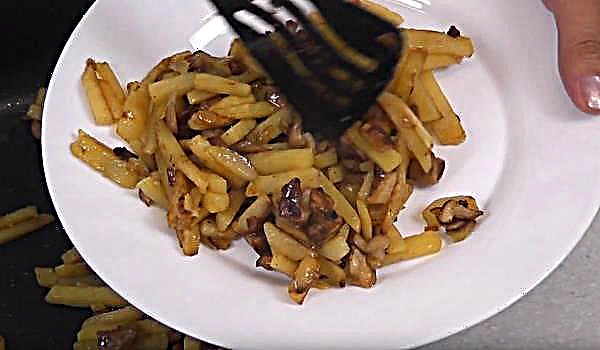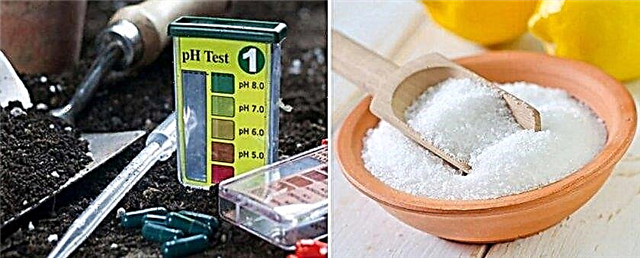There are plants, when you look at which you can doubt their natural origin, the symmetry of the pattern on their leaves is so perfect. One of these plants is the arrowroot, which can decorate any room with its unique appearance. Consider what this flower is, and how to grow it properly.
General description of the plant
From a botanical point of view, the arrowroot is a perennial grass of the Moraine family. This is one of the oldest cultivated plants. South American tribes called it the “arrow-root” and cultivated another 7000 years ago, as evidenced by the finds of starch grains of the West Indian arrowroot on the mill stones of the archaic era.
At the end of the XVII century. the plant was first described by the French scientist Charles Plumier, who studied it during an expedition to the West Indies and gave the name in honor of the Italian doctor and botanist Bartolomeo Maranta. The plant came to Europe in 1732 thanks to Dr. William Houston, who transmitted the arrowroot seeds to the Chelsea Botanical Garden. There are about 40 species of this flower.
Common to all species are such morphological features:
- branched stems (height can vary from 20 cm to 1.5 m);
- tuberous roots;
- basal or two-row arrangement of foliage;
- green, less often - dark red leaves, with a clear and contrasting veining pattern;
- the color of the front and back of the leaves is different;
- the shape of the leaves is oblong or oval-round;
- three-membered flowers, asymmetric;
- the color of the flowers is white, lilac or yellow;
- panicle inflorescences.
Did you know?Arrowroot is used in cooking: for making jelly, sauces, stews (flowers), in diet baking (starch flour from rhizomes of arrowurut), in boiled form (tubers).
The main types of arrowroot
The most famous representatives of arrowroot are presented below:
- White-veined - reaches a height of 30 cm, has green leaves on the front side and reddish leaves on the reverse side, as well as characteristic silver-white lateral veins.

- Reed - also known as arrowroot: from English. arrow - "arrow" and root - "root". It grows in tropical forests and reaches 1.2–1.5 m in height. It has spindle-shaped thickened roots and oval, pointed at the ends, large (up to 25 cm) leaves.

- Two-tone - the upper part of its leaf is bright green and smooth, and the bottom is pink and velvety.

Separately, it is worth noting the varietal forms of white-veined:
- Maranta Kerhoven and Massange (also called “black” because of the dark background of the sheet) - differ among themselves by the predominance of green in Kerhoeven.

- Maranta tricolor (fascinator) - it is characterized by red-pink veins and a colorful feather-like pattern.

House growing conditions
Maranta is a plant of the humid tropics, hence the features of its cultivation at home.
Important! Exposure to direct sunlight can cause leaf burns.
Placement and lighting
Maranta needs good (600–800 lux), but at the same time diffused lighting. It is best to place it on the north window or on a stand, bookcase or cabinet not far from the windows. In winter, the plant requires additional lighting using fluorescent lamps and maintaining a 16-hour daylight. If it is not possible to provide artificial lighting, reduce watering in winter to avoid plant diseases.
Temperature and humidity
Optimum temperature: +22 ... + 24 ° С in the summer and at least + 17 ° С in the winter. Too much hot and too cold rooms are harmful to arrowroots. As for humidity, here you can not be afraid to overdo it. Humidify the air should not less than 60%, and best of all, up to 90%.
To do this, the arrowroot is placed next to:
- aquariums;
- containers with wet pebbles;
- humidifiers.
Important! You need to regularly prune deciduous foliage, and at the end of winter to form a plant, removing excess leaves at the base under the nodule, to grow new shoots and get a lush but neat bush.
In summer, the plant can be taken out into the open air and placed in a shaded and sheltered from the wind place (for example, on a covered terrace). Maranta does not tolerate drafts and the vicinity of a icy window, so the window sill should be insulated in the cold season:
- hang a curtain from the film on the frame;
- put a foam roller under the frame;
- put foam insulating plates on the windowsill.

Maranta home care
Some varieties of arrowroot are more moody, others are relatively unpretentious. General rules for plant care include watering, fertilizing, timely transplanting and reproduction activities.
Watering and feeding
Watering is carried out every 3-4 days. To do this, use warm (5–7 ° higher than air temperature), standing water, slightly acidifying it with lemon juice or citric acid (30–40 g of acid per 10 liters of water). In addition, foliage is sprayed several times a day with soft water. If there is no time for this procedure, you can put a flower pot in a tray with moss or wet expanded clay. In the spring-summer period, the soil should be fertilized once every 2 weeks, using mineral complexes for decorative foliage plants, reducing the concentration specified in the instructions by 2 times.
If there is no time for this procedure, you can put a flower pot in a tray with moss or wet expanded clay. In the spring-summer period, the soil should be fertilized once every 2 weeks, using mineral complexes for decorative foliage plants, reducing the concentration specified in the instructions by 2 times.
Soil care and arrowroot transplantation
To increase the friability of the soil, river sand and leaf humus are added to it in equal proportions, as well as crushed charcoal for the prevention of fungal diseases.
It is recommended that the arrowroot be transplanted annually in March or April into such dishes:
- slightly larger than the previous one;
- wide but shallow (due to horizontal root development);
- with a drainage layer of pebbles, expanded clay, coarse sand.
Video: how to transplant arrowroot
Breeding
Every year arrowroots become more and more popular both among amateur gardeners and professionals, in connection with which the reproduction of these plants is a subject of constant interest. There are 2 ways to propagate arrowroot: by cuttings and by dividing the roots.
Did you know? In Japan, the arrowroot is called "kudzu" and is included in the list of 7 autumn herbs used for decoration during the celebration of the September full moon.
Cuttings
Shanks are shoots about 10 cm in size, with one or two leaves. They can be cut in the warm season (from May to September) so that the cut passes 2 cm below the site. Cuttings are placed in water and kept in a warm room for about a month and a half, until the roots appear. Then the cuttings are placed in a pot with soil, watered and covered with a film to create a greenhouse effect (until new layers appear). Cuttings are considered a less traumatic, but not always successful method of propagation, which is why it is necessary to grow not one, but several cuttings at once.
Then the cuttings are placed in a pot with soil, watered and covered with a film to create a greenhouse effect (until new layers appear). Cuttings are considered a less traumatic, but not always successful method of propagation, which is why it is necessary to grow not one, but several cuttings at once.
Root division
The procedure is best done during transplantation. The plant is taken out of the pot so that a little earth remains on the rhizome, and manually carefully divided into 2-3 parts. The separation sites are treated with crushed activated carbon. The roots are allowed to dry and each part is placed in a separate container with soil, which is put under the film until new shoots appear. The mini-greenhouse is periodically opened for ventilation.
Possible growing difficulties
Growing arrowroot can be overshadowed by damage to diseases and pests. Most often, problems are associated with improper care:
- fading leaves - a consequence of too bright light;
- foliage turns yellow, dries and falls with low humidity and drafts;
- rotting of stems occurs with waterlogging of the soil;
- brown spots on the leaves talk about a lack of fertilizers, poor soil, lack of moisture.
Maranta often suffers from such pests:
- Red spider mite. Its harmful effect can be identified by the appearance of white spots on the leaves, their fall. The tick appears in rooms with excessively dry air, so moisturizing the air and spraying the foliage will be prevention. Alternative methods of getting rid of the tick include treatment with garlic infusion: a couple of garlic heads are crushed, poured with a liter of warm water and infused for a day, then diluted 1: 1 with cold water and sprayed on the plant for a week. You can also treat the flower with the industrial insecticide "Aktara" or "Fitoverm".

- Mealybug. Affects petioles of leaves. At the initial stage, the leaves can be treated with a solution of laundry soap. If the worm infection has gone too far, use insecticides, after several treatments with an interval of 5 days.

Arrowroot is often found in collections of flower growers due to the unusual, bright color of the leaves and the rather simple care compared to other members of the family. The article revealed the intricacies of cultivation, subject to which the plant will delight you with its impeccable appearance.



















